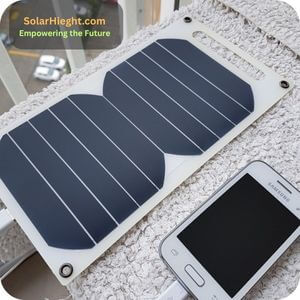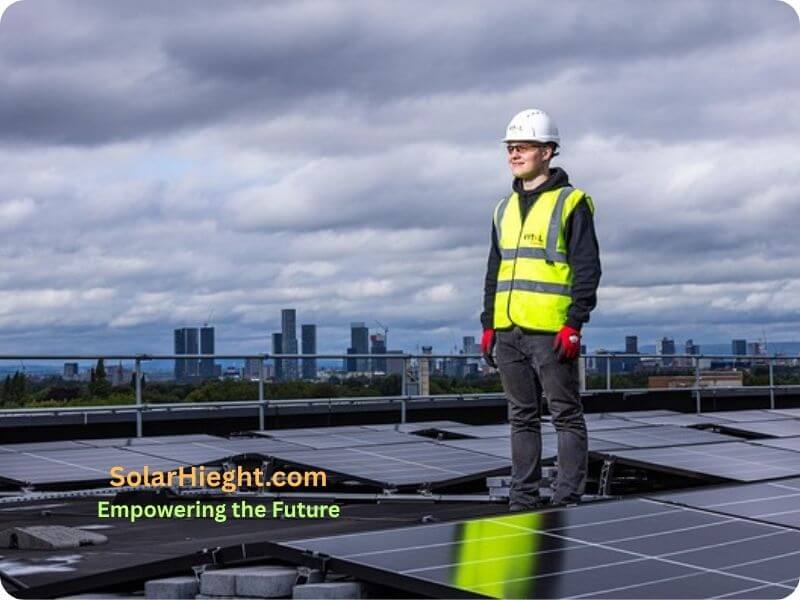Discover the science behind turning sunlight into electricity
. Introduction
“The sun above us powers more than just plants — it can power your home.” “Stop Wasting Sunlight – Harness It!”
Almost every form of energy we use today traces back to the sun. Whether it’s wind, thermal, or even fossil fuels — they’re all solar-powered in origin.
- Wind energy? It’s driven by temperature differences created by the sun, causing air to move from high to low pressure.
- Fossil fuels? Ancient plants once absorbed sunlight through photosynthesis. Over millions of years, they were compressed into oil, coal, and gas beneath the earth’s surface.
The sun’s heat maintains Earth’s climate balance — not too hot, not too cold — sustaining life. Without it, life as we know it would cease.
Unfortunately, fossil fuels — the powerhouse of past generations — are now harming the planet they once helped develop.Nature created it and now, the same nature is telling us to stop. Burning them releases greenhouse gases like carbon dioxide and sulfur, leading to pollution, health risks, and global warming. Worse still, they’re non-renewable — taking millions of years to form and just minutes to burn.
That’s why solar energy stands out. It’s clean, renewable, and available now. In this post, we explore how it actually works — from sunbeam to socket.

What Is Solar Energy?
Solar energy is any form of energy generated by the sun. Nearly all life on Earth depends on it — directly or indirectly — for food, warmth, and power.
Two Main Types:
- Photovoltaic (PV) Solar Energy – Converts sunlight directly into electricity.
- Solar Thermal Energy – Uses sunlight to produce heat for hot water or power generation.“We will have a steady, limitless supply of sunlight for another five billion years. In one hour, Earth receives enough sunlight to meet the world’s electricity needs for a year.”— National Geographic Education
Bonus Types:
. Concentrated Solar Power (CSP) – Mirrors focus sunlight to generate steam that drives turbines.
- Passive Solar Energy – Utilizes building design to absorb or reflect heat naturally.
- Building-Integrated Photovoltaics (BIPV) – Solar materials built directly into rooftops or windows.
The Solar Panel: The Power Collector

Solar panels work through the photovoltaic (PV) effect. Each panel contains many cells made from semiconductors like silicon.When sunlight hits the panel-Photons (light particles) strike the cells-They knock electrons loose from atoms-An electric field pushes these electrons into a current.This creates direct current (DC) electricity-It’s a silent, clean process — the beginning of solar-powered electricity.
Inverter: The Power Translator
Solar panels generate DC electricity, but homes and appliances use AC (Alternating Current).Wether it is String inverters, Microinverters or Central inverters, inverters are the system’s translator — it converts DC(Direct Current) which cannot be carried long in the interface into AC so your lights, fridge, and fan can work seamlessly. That’s why many call the inverter “the heart of a solar system.”
The Flow: From Sun to Socket
Here’s how solar energy gets to your home:🌞 Sunlight hits the solar panels⚡ DC electricity is generated*Inverter converts DC to AC🏠 AC powers your home or is stored🔋 Excess energy is sent to batteries or the grid
Battery Storage (Optional but Powerful)
Batteries store unused energy for:Nighttime, Cloudy days and Power outages. The Common Battery Types are as follows: Lead-acid (more affordable), Lithium-ion (longer life, higher performance), Flow batteries. Example of solar batteries include the Tesla Powerwall. While Tesla uses a slightly different chemistry in the production of their Powerwall, BYD, a Chinese company located in Shenzen China, does something different. There are the world’s largest manufacturer of renewable energy and solar energy storage systems. Their lithium-ion and lead-acid are suitable for residential, commercial, and industrial applications. There will be a lot of recommendations for Nigeria homes in our subsequent posts and we employ you to keep a date with us. Batteries have seen many improvements in the last few years which enhances hope in the future of renewable energy. Having good storage system turns your solar energy system into a more reliable and self-sufficient energy source.
The charge controller:
Regulate the flow of current from the solar panel to the battery bank. In fact it is responsible for load management. It ensures that the battery is getting the required current from source there by preventing overcharging in a way that the battery live is protected. It ensures that current saved in the battery is not discharged or does not go back to the source. Its critical function is also to prevent deep discharge that reduces the current in the battery to the extent that the battery is damaged. There is the PWM (Pulse Width Modulation) and the – MPPT (Maximum Power Point Tracking)
Conclusion
From wind to fossil fuels, all energy starts with the sun. But only solar energy taps directly into that source — cleanly and continually.
Solar panels don’t just generate electricity — they represent independence, sustainability, and hope for a cleaner world.
Ready to switch? Stay with us at SolarHieght as we break it all down and help you take the next step toward energy freedom.
Pingback: 5 Common Myths About Solar Power — And the Truth You Should Know - solarhieght.com